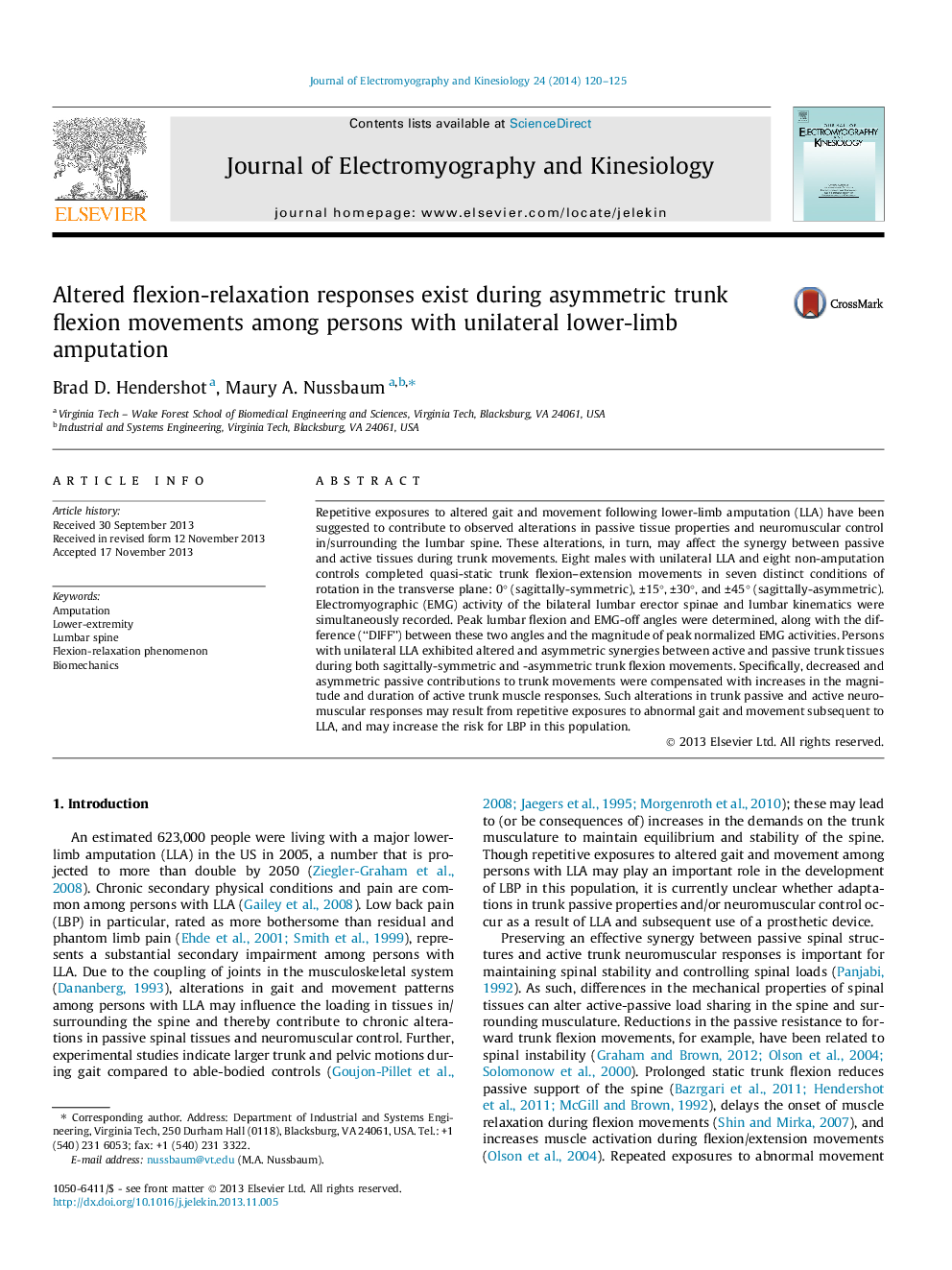| کد مقاله | کد نشریه | سال انتشار | مقاله انگلیسی | نسخه تمام متن |
|---|---|---|---|---|
| 4064640 | 1266220 | 2014 | 6 صفحه PDF | دانلود رایگان |
Repetitive exposures to altered gait and movement following lower-limb amputation (LLA) have been suggested to contribute to observed alterations in passive tissue properties and neuromuscular control in/surrounding the lumbar spine. These alterations, in turn, may affect the synergy between passive and active tissues during trunk movements. Eight males with unilateral LLA and eight non-amputation controls completed quasi-static trunk flexion–extension movements in seven distinct conditions of rotation in the transverse plane: 0° (sagittally-symmetric), ±15°, ±30°, and ±45° (sagittally-asymmetric). Electromyographic (EMG) activity of the bilateral lumbar erector spinae and lumbar kinematics were simultaneously recorded. Peak lumbar flexion and EMG-off angles were determined, along with the difference (“DIFF”) between these two angles and the magnitude of peak normalized EMG activities. Persons with unilateral LLA exhibited altered and asymmetric synergies between active and passive trunk tissues during both sagittally-symmetric and -asymmetric trunk flexion movements. Specifically, decreased and asymmetric passive contributions to trunk movements were compensated with increases in the magnitude and duration of active trunk muscle responses. Such alterations in trunk passive and active neuromuscular responses may result from repetitive exposures to abnormal gait and movement subsequent to LLA, and may increase the risk for LBP in this population.
Journal: Journal of Electromyography and Kinesiology - Volume 24, Issue 1, February 2014, Pages 120–125
